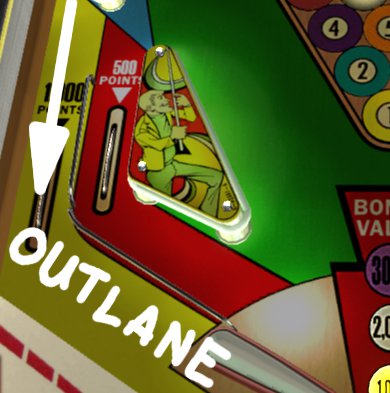My non-Mostly Tigerproof work is coming to a close, and I’m back to prototyping weird ideas again. This time the theme is pinball.
I’ve always loved pinball. During the 50-ish years between the advent of flippers and coin-op pinball’s commercial collapse, it has become a well-tuned and richly elaborated class of games, so it might not be obvious why I’d choose it as something to try to improve upon. In spite of how much refinement it’s seen, I believe the game still has glaring problems.
I play vastly more video pinball than real pinball. I grew up on video pinball, as did nearly everyone younger than me. In some ways pinball is poorly adapted to what is now an overwhelmingly software-based existence:
- It’s fundamentally portrait in a landscape world. I’m looking for ways to make better use of wide screens.
- There’s no consensus on what the role of nudging should be. Is it cheating? Is it essential, because you have no other defence against the outlanes?
- Nudging is usually poorly implemented in video pinball, due to its partial legitimacy. If nudging is part of the game, it needs better feedback: on-screen counters of how many nudges I have left before a tilt, hints about how far the ball will be nudged, maybe even a nudge training table. If nudging isn’t part of the game, the game needs redesigned so it won’t be missed.
- And speaking of outlanes, they’re shitty design. They prevent good players from playing indefinitely (a particular worry in coin-op), but they do it through random instant death. There have been a couple of attempts to replace them with timers (Goin’ Nuts, Safecracker), but hitting a time limit almost feels even cheaper than getting an unlucky bounce. Luckily there’s no shortage of ways to make a game hard.
- Pinball tables don’t do a good job of communicating goals during play, and the goals are arbitrary without much internal logic to them. Flashing lights and voice prompts are very helpful, but personally there’s so much unexplained stuff I wind up reading the manual. Reading the manual is a chore though. It’s a chore that recurs on every table, which might be unnecessary. Could there be a system of goals shared between a family of tables?
It’s wonderful that pinball rewards such high levels of finesse, but it’s hateful that even after hours of practice, beginners find their performance is dominated by random chance. Even when they do achieve things, it’s hard to take pride in it with the knowledge that flukes outnumber intentional shots. I think pinball should do a much better job of reflecting the player’s intent, even if their timing isn’t dead on. I’d love to bring the experience of being good at pinball to a wider audience, while giving old hands even greater challenges.
Those are my high-falutin’ design goals. More on my specific approach in the next post.

